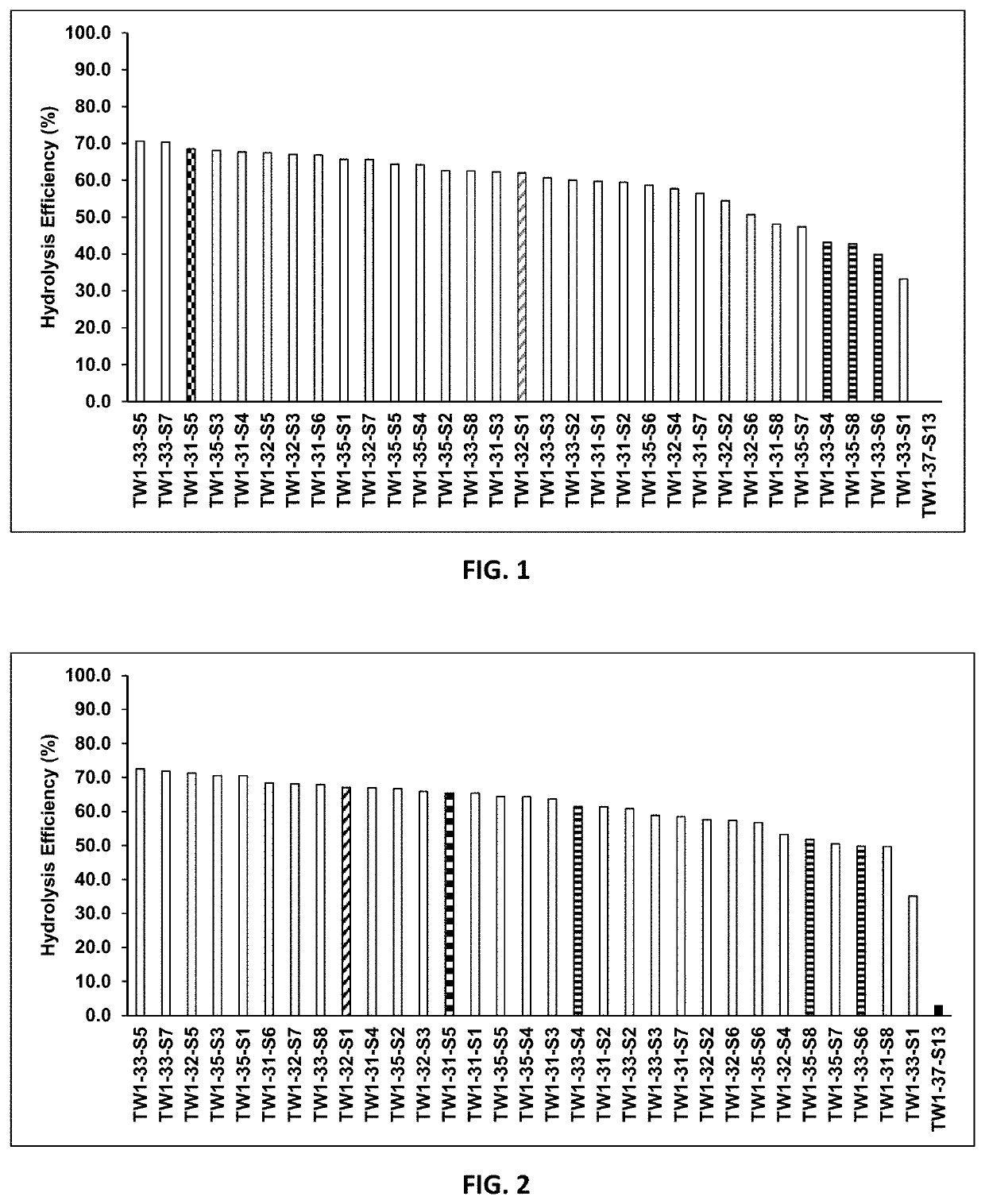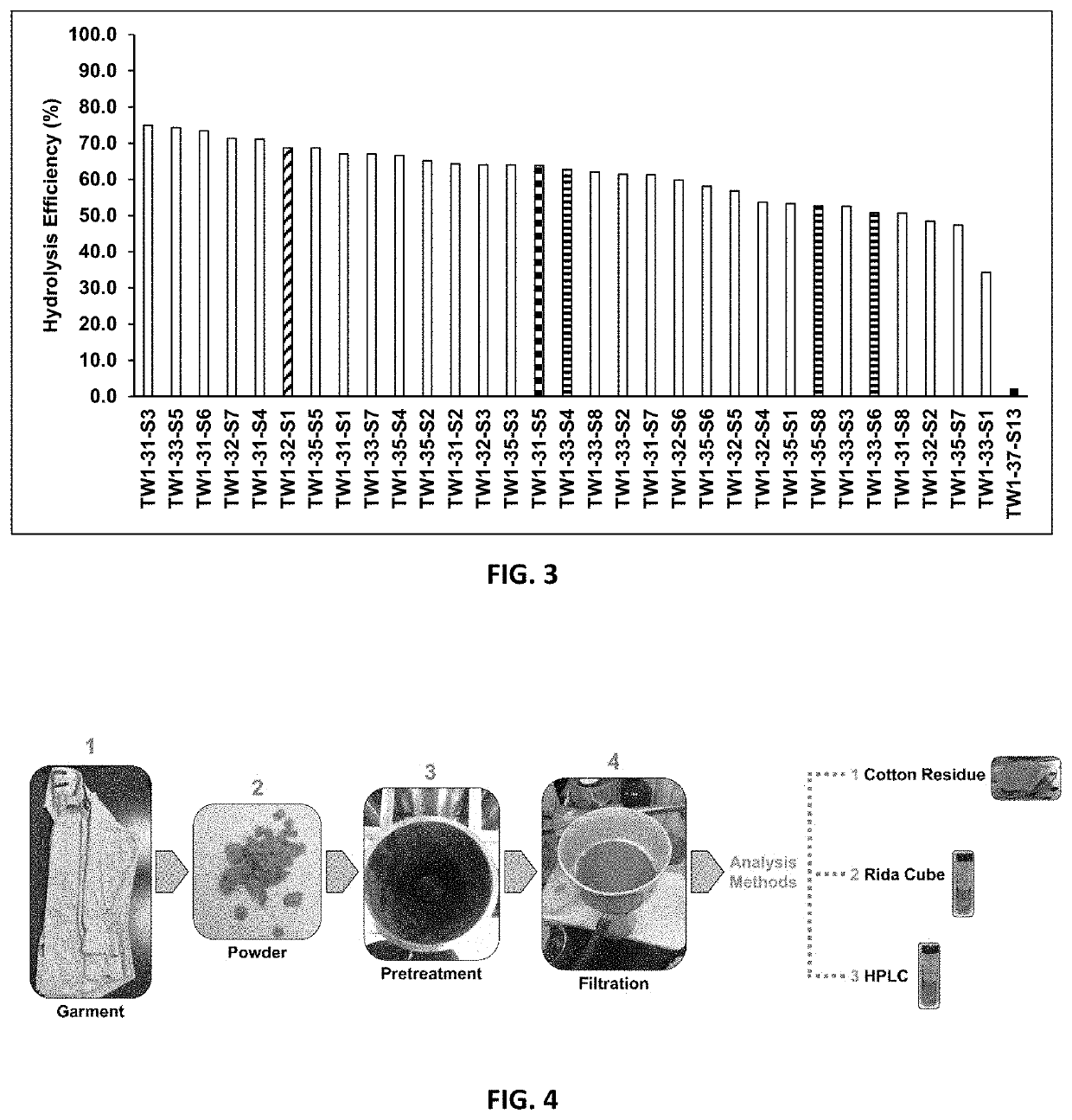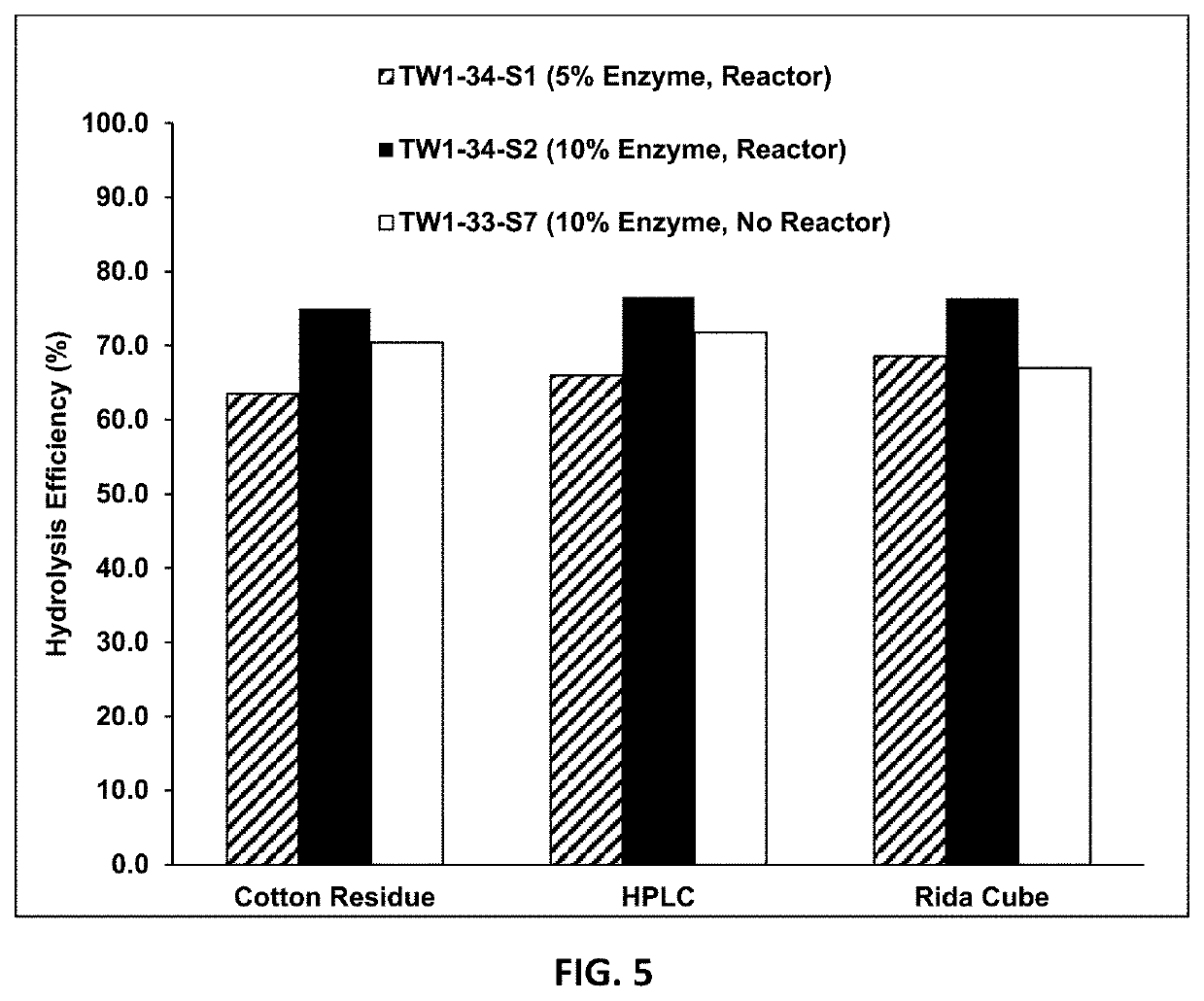Cotton textile waste fabric used as a biomass for the production of sugar
- Summary
- Abstract
- Description
- Claims
- Application Information
AI Technical Summary
Benefits of technology
Problems solved by technology
Method used
Image
Examples
examples
[0075]A cotton containing textile is cut and ground into a powder using a Thomas Wiley Mini-Mill grinder. The cotton powder is pretreated with 18.22 g / L phosphoric acid at a 6:1 liquor ratio at 265° F. for 2 h in a Roaches Pyrotec dyeing machine. Ball bearings are added to enhance internal mixing of the cotton slurry. The acid pretreatment creates a homogenous cotton slurry with much lowered viscosity. The pretreated cotton slurries are cooled to 140° F., and to each slurry, 8.92 g / L of NaOH is added. The caustic effectively converts the phosphoric acid to form sodium phosphate in situ. The slurry containing the pretreated cotton, phosphoric acid and sodium hydroxide is circulated for 15 min at 140° F. in the Roaches Pyrotec dyeing machine to form the sodium phosphate.
[0076]Next, 8.50 g / L citric acid is added to each slurry, and the slurry containing the phosphoric acid, sodium hydroxide, and citric acid is circulated again for 15 min at 140° F. in the Roaches Pyrotec dyeing machine...
PUM
| Property | Measurement | Unit |
|---|---|---|
| Temperature | aaaaa | aaaaa |
| Temperature | aaaaa | aaaaa |
| Temperature | aaaaa | aaaaa |
Abstract
Description
Claims
Application Information
 Login to View More
Login to View More - R&D Engineer
- R&D Manager
- IP Professional
- Industry Leading Data Capabilities
- Powerful AI technology
- Patent DNA Extraction
Browse by: Latest US Patents, China's latest patents, Technical Efficacy Thesaurus, Application Domain, Technology Topic, Popular Technical Reports.
© 2024 PatSnap. All rights reserved.Legal|Privacy policy|Modern Slavery Act Transparency Statement|Sitemap|About US| Contact US: help@patsnap.com










